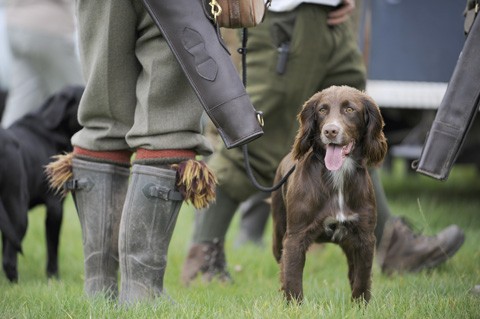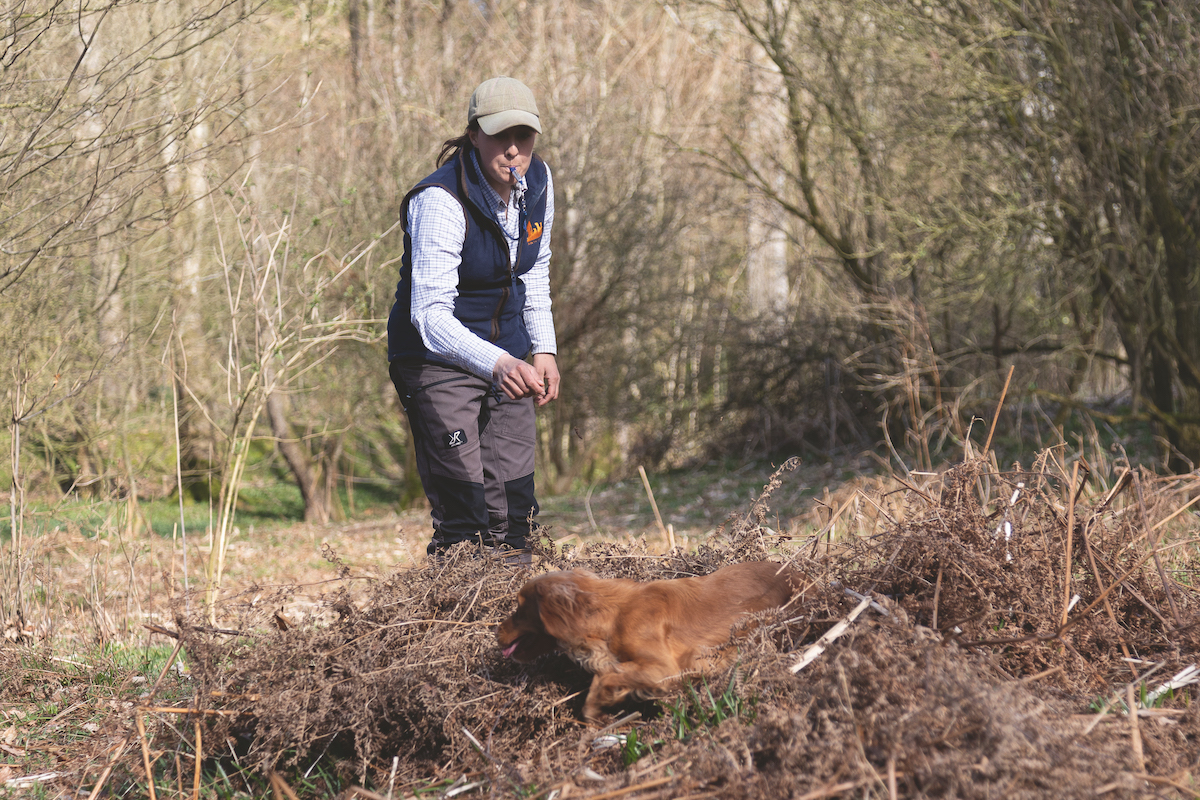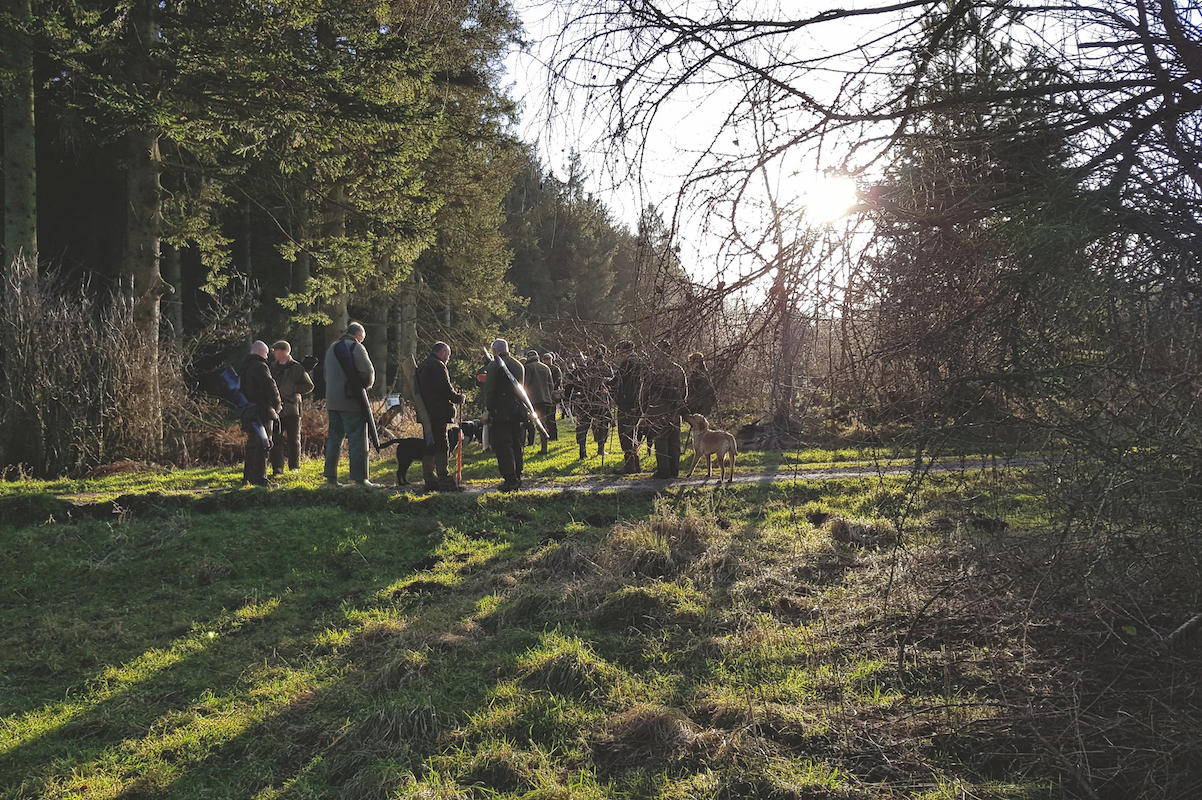Gundog training at home

Gundog training: Having started game shooting five years ago I have spent the intervening seasons as a gun in my local syndicate. I had enjoyed some great days in the field but never ceased to wonder at the skill and energy of the various working dogs and their handlers, be they picking-up, beating or on the peg. I began to feel something was missing.
As a result of an enforced absence from work, I knew I would have the time to devote to nurturing and gundog training a young puppy, so decided to take the plunge. I had never owned a dog before, let alone a working dog, so this was a big decision and was going to be an even bigger challenge.
The first consideration was ‘which breed’? There were a number of considerations to take into account here too; where was the dog to be housed – outside in a kennel or in the house? What were the various temperaments of the working breeds (I have two young children) and what about the size of the dog?
After much consideration, I opted for a cocker spaniel. The dog would be housed indoors because the cost of a decent kennel was a bit prohibitive, and the fun-loving and energetic nature of the breed suited my family circumstances. Not being a particularly big dog I could easily pop it in the back of my Defender with all the rest of the gear.
Picking a puppy for gundog training
I was fortunate to have a good friend, who was also our shoot captain, who had two cocker bitches that had come from breeder and trainer Will Clulee. I contacted Will’s kennels and although he could not help he put me in touch with another local breeder and I went to see a litter of eight-week-old pups and spent some time watching them playing around their basket.
A consideration had to be given as to whether I had a bitch or a dog. Bitches are generally of a more even temperament and thus easier trained, whereas dogs tend to be more headstrong. Bitches fall into season and it is important to keep them away from other dogs during these periods. In the end, my mind was made up for me as there was one little dog who was clearly the character of the bunch and I opted to take him after meeting the mother and father and examining the pedigree.
Both parents were working as picking-up dogs on another local shoot and the pedigree showed many field trial champions and winners. The dog’s grandfather was FTCh Argyll Warrior so I knew the little chap had a great potential. All of the pups had been legally docked, dew clawed and micro-chipped as well as being registered with the Kennel Club.
A risky name
The dog was to be cage-trained and was to be allowed in the kitchen and utility room only. ‘McQueen’ (Ed. It might be asking for trouble naming your cocker spaniel after the star of The Great Escape!) settled in to his new surroundings and made friends with the rest of the family with ease. The first task was to house train him and get him used to his name so that he came when called. Again this proved an easy task. He soon learnt that when he was let out in the morning, that was the time to go about his business and I can recall only two ‘incidents’ in the house.
It was very important to build a strong bond with the pup by showing him lots of affection, constantly talking to him and getting him used to looking at me. He soon learnt that when I called him this meant it was time for a stroke or small treat and, by a very young age, he would come every time when called and sit at my feet. I always insisted on him adopting a “sit” before engaging in any stroking or giving of treats and again he soon learnt that this was the posture to adopt when I called him. I subsequently slowly built in to this routine a whistle noise, and then a dog whistle, making sure the dog came to me and sat at my feet each time.
Constructive play
One point that is worth considering is what you actually want to achieve from gundog training. Do you want to trial your dog or, as in my case do you want a relatively competent, obedient dog that will retrieve birds effectively and not misbehave unduly on shoot days?
Throughout this time we were engaged in constructive play, retrieving tennis balls and finding things I had hidden in the garden after giving him a scent. All of the time I was slowly building commands into these activities so that he would associate “get on” with retrieving and “bring him here” with returning to me with his quarry.
“Sit” and “stay” were a little more challenging as cockers are such busy little dogs that they want to be active all the time and slowing them down, let alone stopping them, can be nigh on impossible on occasions. Patience is the key here and will ultimately be rewarded. Getting him to stay where I left him took some considerable patience. It was important to immediately take him back to where I had left him and repeat the exercise every time he erred and he eventually got it.
From dummies to the shooting field
By now it was time to start some dummy work, teaching him to sit and wait for the command to retrieve before diving after the fallen dummy and getting it straight back to hand each time. Again, patience is the key but it was very rewarding to observe the progress. By this stage I had mastered all of the basic commands, so it was easier to get him to understand what was required by using those commands in the process.
I have to say that McQueen has been extremely easy to work with, is eager to learn and is proving something of a natural. I took him with me to the peg each time I shot the season before last when he was just under a year old, just to get him used to what it was all about. Thankfully, gun shyness was not an issue. He was never allowed off the lead or to do any retrieving until beaters’ day at the end of the season when he acquitted himself well and made some nice retrieves.
This past season he has been out with me every time and, although he is still a bit too eager to get off the peg and after the shot birds, I have been very proud of what we have achieved together over the last couple of years. He is still very much a “work in progress” but I know that with a little more effort and more patience he will become a competent peg dog and make my days out in the field even more enjoyable.








